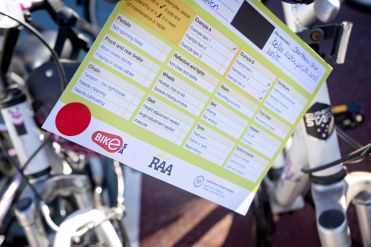
Way2Go Bike Ed bike safety check

Why it matters
Bike safety checks ensure:
- bicycles are safe from the start of the program
- practical bike riding activities can begin straight away with more practice time
- parent/caregiver receive information about the roadworthiness of their child’s bike.
How it works
Service providers provide the bike safety checks in schools participating in the Way2Go Bike Ed program. Bike safety checks are usually done on the morning of the first day of participation.
- Students are encouraged to bring their own bikes and helmets for the Way2Go Bike Ed program.
- Student-owned bicycles will be checked before the first practical sessions begin.
- If a student forgets or is unable to bring their bike on bike check day, they will not be able to use their bike during the program.
- The service provider can provide up to 15 bicycles and helmets for students who don’t own or cannot bring a bicycle to school.
Process
Bike safety check card is completed.
If a detected fault can be repaired with minor adjustment or basic maintenance, best efforts will be made if time permits.
For repairs that require new parts or major work:
- this will be identified on the bike safety check card
- the bike will be referred back to the parent/caregiver for their attention.
When bikes are not roadworthy or unsafe to ride
Students will not be able to use bikes that are not roadworthy.
The service provider will discuss this with the student and school coordinator or class teacher.
Once the parent or caregiver is notified, they may choose to:
- repair the bike
- take the bike to a bike shop (the bike safety check card may help explain the issue to the mechanic)
- let the school know that they are unable to repair the bike.
If the bike cannot be repaired, the School Coordinator can ask the service provider for loan bike.


